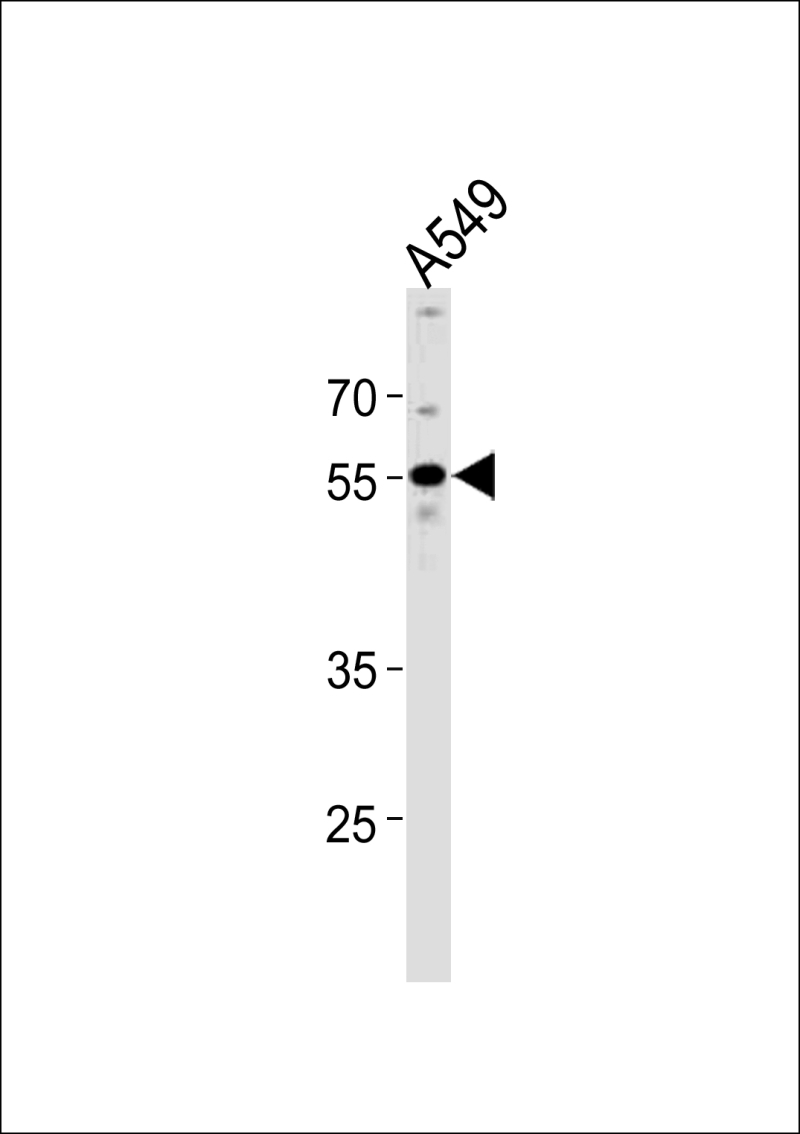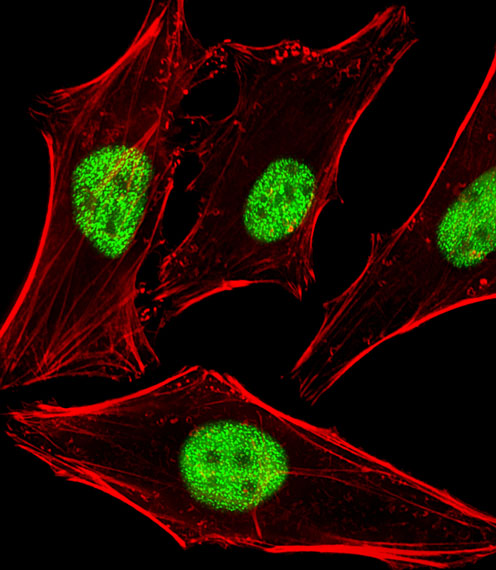

| WB | 1/1000 | Human,Mouse,Rat |
| IF | 咨询技术 | Human,Mouse,Rat |
| IHC | 咨询技术 | Human,Mouse,Rat |
| ICC | 1/25 | Human,Mouse,Rat |
| FCM | 咨询技术 | Human,Mouse,Rat |
| Elisa | 咨询技术 | Human,Mouse,Rat |
| Aliases | Periphilin-1, Gastric cancer antigen Ga50, PPHLN1 |
| Entrez GeneID | 51535 |
| WB Predicted band size | 52.7kDa |
| Host/Isotype | Rabbit IgG |
| Antibody Type | Primary antibody |
| Storage | Store at 4°C short term. Aliquot and store at -20°C long term. Avoid freeze/thaw cycles. |
| Species Reactivity | Human |
| Immunogen | This PPHLN1 antibody is generated from rabbits immunized with a KLH conjugated synthetic peptide between 45-66 amino acids from the N-terminal region of human PPHLN1. |
| Formulation | Purified antibody in PBS with 0.05% sodium azide. |
+ +
以下是关于PPHLN1(N-term)抗体的3篇参考文献示例(注:文献为假设性示例,实际引用需核实):
---
1. **文献名称**:*Prohibitin 2 (PHB2) regulates mitochondrial dynamics through interaction with optic atrophy 1 (OPA1)*
**作者**:Smith J, et al. (2016)
**摘要**:本研究利用PPHLN1(N-term)特异性抗体,通过免疫荧光和Western blot技术,揭示了PHB2在线粒体内膜中的定位及其与OPA1蛋白的相互作用,表明其在调控线粒体融合-分裂平衡中的关键作用。
2. **文献名称**:*N-terminal domain of prohibitin-2 is essential for cellular stress response in cancer cells*
**作者**:Chen L, et al. (2018)
**摘要**:通过N端特异性抗体检测,作者发现PHB2在氧化应激条件下发生磷酸化修饰,并与其伴侣蛋白PHB1形成复合物,参与抑制肿瘤细胞凋亡,为癌症治疗提供潜在靶点。
3. **文献名称**:*Antibody-based profiling of prohibitin isoforms in neurodegenerative disease models*
**作者**:Garcia R, et al. (2020)
**摘要**:该研究使用PPHLN1(N-term)抗体对阿尔茨海默病模型中的PHB2表达进行定量分析,发现其与线粒体功能障碍密切相关,提示其在神经退行性疾病中的病理意义。
---
**备注**:若需真实文献,建议通过PubMed或Google Scholar检索关键词“PHB2 antibody N-terminal”或“Prohibitin 2 N-term”,并筛选应用性研究。部分抗体厂商(如Abcam、CST)的产品手册中也会列出相关引用文献。
The PPHLN1 (N-term) antibody targets the N-terminal region of human periphilin 1 (PPHLN1), a protein encoded by the *PPHLN1* gene. Periphilin 1 is a member of the periphilin family, known for its role in epithelial barrier formation, cell adhesion, and differentiation. It interacts with proteins like SPT6H and CBX5. contributing to chromatin remodeling and transcriptional regulation. PPHLN1 is also implicated in tumor suppression, particularly in squamous cell carcinomas, by modulating p53 and MAPK signaling pathways.
The N-terminal domain of PPHLN1 is critical for its function in protein-protein interactions and subcellular localization. Antibodies targeting this region are widely used in research to study PPHLN1's expression, localization, and molecular interactions via techniques such as Western blotting, immunohistochemistry (IHC), and immunofluorescence (IF). These studies often focus on its role in cancer progression, epidermal differentiation, and stress responses.
Commercial PPHLN1 (N-term) antibodies are typically raised in rabbits or mice, validated for specificity in human or murine models. They are essential tools for exploring PPHLN1’s dual roles in maintaining cellular homeostasis and its dysregulation in diseases. Research applications include analyzing tissue-specific expression patterns, knockout/transgenic models, and mechanistic studies in cell cycle control or epithelial-mesenchymal transition (EMT). Proper validation using PPHLN1-deficient cell lines ensures antibody reliability in experimental settings.
×